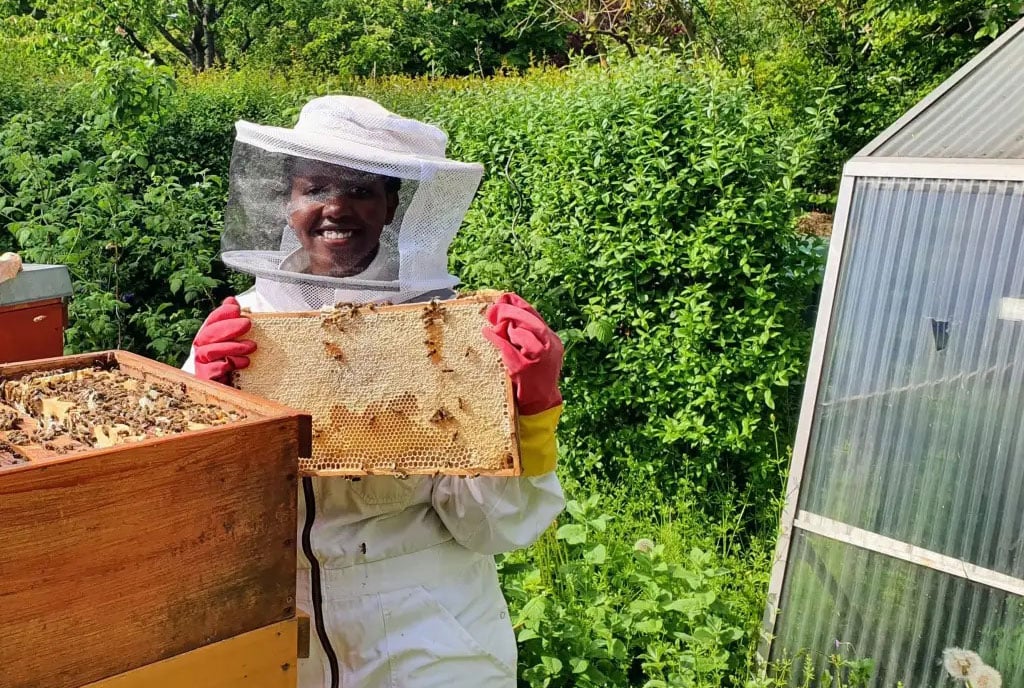How to grow beans successfully
What you need to know:
- Usually, when the beans are at the stage of three leaves, weeds begin to appear and this is the best time for the farmer to begin weeding.
- During the weeding the farmer should dig up the soil around the plant to support water and nutrients infiltration, writes Michael J Ssali
Growing beans successfully begins with good seed bed preparation. The soil in the garden should be fine, free of clods and weeds.
Charles Katamba, an agricultural extension officer, and Programme Manager at Community Enterprises Development Organisation (CEDO) an NGO that promotes bean production in Greater Masaka Sub-region says that a well prepared garden results in uniform growth of the beans.
“If there are any stubborn weeds that cannot be easily dug out, they may be killed with a herbicide but this should be about three weeks before ploughing,” says Katamba.
Planting
Katamba says at the time of planting, the soil should be moist to facilitate quick seed germination, which should take place within seven days after planting. The best time to plant seeds is at the beginning of the rainy season.
It is also important for the farmer to plant improved bean seeds from agricultural research institutions such as National Agricultural Research Organisation (Naro) or National Agricultural Crop Resources Research Institute (NACRRI).
“Farmers are free to plant seeds of their choice saved from their own harvests but the reason we recommend improved bean seed varieties from research organisations is that they have been bred to be high yielding, quick maturing, tolerant to drought, more nutritious and quite marketable,” Katamba said.
“They are clean, treated, and sorted to withstand pest damage. The farmer will of course spend some money to purchase the seeds but the big benefits of planting improved and clean seed will always make up for the expenditure.”
Farming practices
Gloria Namubiru, also an extension service officer working with CEDO, emphasises the importance of good farming practices in bean production.
“If the soil is poor, the farmer should apply fertilisers to get the best results,” she said. “Some agricultural extension service officers have soil testing kits and the farmer should ask them to examine their soil before applying of any manufactured fertilisers. But I would advise farmers with soil fertility issues to use organic fertilisers such as livestock droppings which may be liberally broadcast all over the garden before planting.”
She also said that after establishing the initial state of the soil, inorganic fertilisers such as NPK, Urea, or DAP may be applied in amounts recommended by the area agricultural services extension officer.
She further said spacing should be one seed per hole at 50 centimetres between rows and 10 centimetres between plants.
Between 25 and 30 kilogrammes of bean seed should be enough for planting in one acre if the spacing guidelines are well followed.
Weeding
“The bean farmer must continuously be on the look-out for weeds which could compete with the beans for soil nutrients and reduce yields,” Namubiru says.
Another reason weeds have to be removed from the bean crop is that they can introduce pests and diseases.
Usually, when the beans are at the stage of three leaves, weeds begin to appear and this is the best time for the farmer to begin weeding.
During the weeding, the farmer should dig up the soil around the plant to support water and nutrients infiltration.
Weeding may be continued throughout the growing period of the beans as and when the weeds appear in the garden.
Weeding should, however, not take place during flowering as this may cause flower drop and reduce yields.
Andrew Mukasa, another Agricultural Services Extension Officer at CEDO says the same recommended agronomic practices for bush beans apply for climber beans except that a stick should be placed around the foot of the growing bean for it to climb and cling on.
Pests and diseases
He says most improved bean varieties are tolerant to such diseases as anthracnose, angular leaf spot, common bacterial blight, rust and bean common mosaic.
However, they may easily be attacked by bean root rot and they are also prone to such pests as aphids, thrips, and bean fly.
To minimise losses due to pests the farmer is advised to plant early, at the beginning of the rain season, weed early, improve soil fertility, and seed dress with Endosufan a day before planting.
To minimise pest attack they also recommend the use of systematic insecticides from registered agro-dealers, spraying immediately the first flower appears and repeating after 14 days.
The farmer should practise crop rotation, apply pesticides and fungicides as recommended by the extension officer, plant clean, disease free seed, remove and destroy diseased plants as soon as possible, and improve soil fertility.
Harvesting
Mukasa reveals that with good crop husbandry practices Nabe bean varieties are ready for harvesting between 60 days and 78 days.
“When we speak about time for harvesting we include the stage when they are harvested to be cooked and eaten in fresh form. Otherwise at between 60 and 78 days the beans begin yellowing and drying. Removal from the field should take place before they are too dry in order to minimise wastage. Very dry pods can burst in the field and spill the beans in the field or on the way from the field,” Mukasa says.
Mukasa goes on to emphasise extreme clean handling of beans during the harvest and post-harvest period.
“Drying should be done on clean tarpaulin or mats. Thresh by beating with sticks when the pods are really dry and then remove all foreign objects from the beans. Dry thoroughly (moisture content of 13 per cent) before storing in dry clean containers. With good agronomic practices 700 to 800 kilogrammes of dry beans should be harvested from an acre.”




